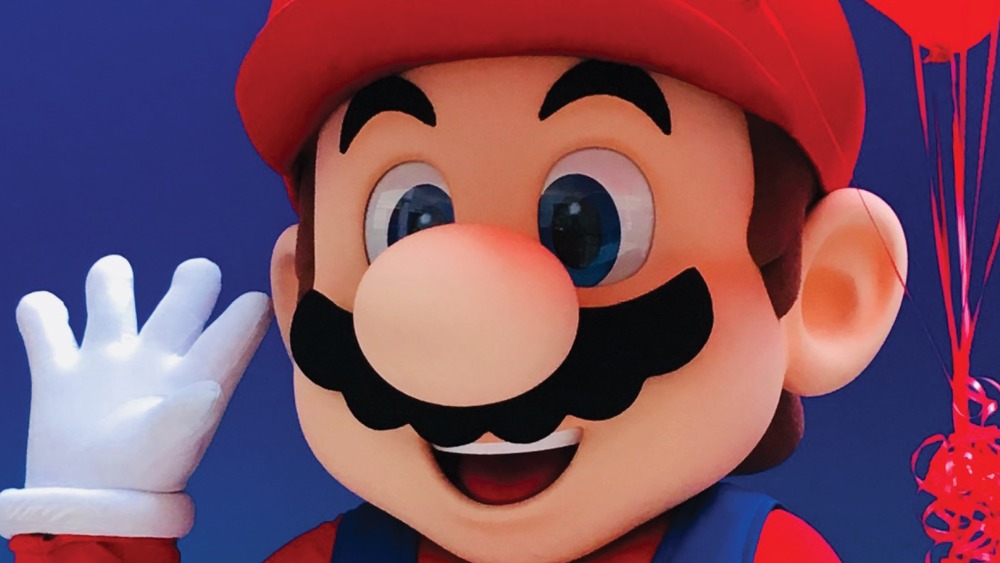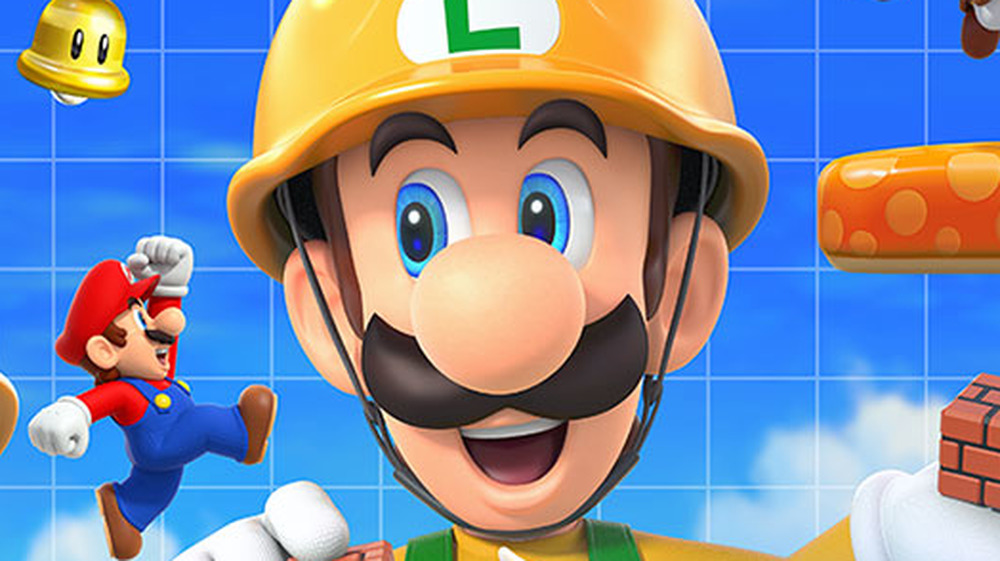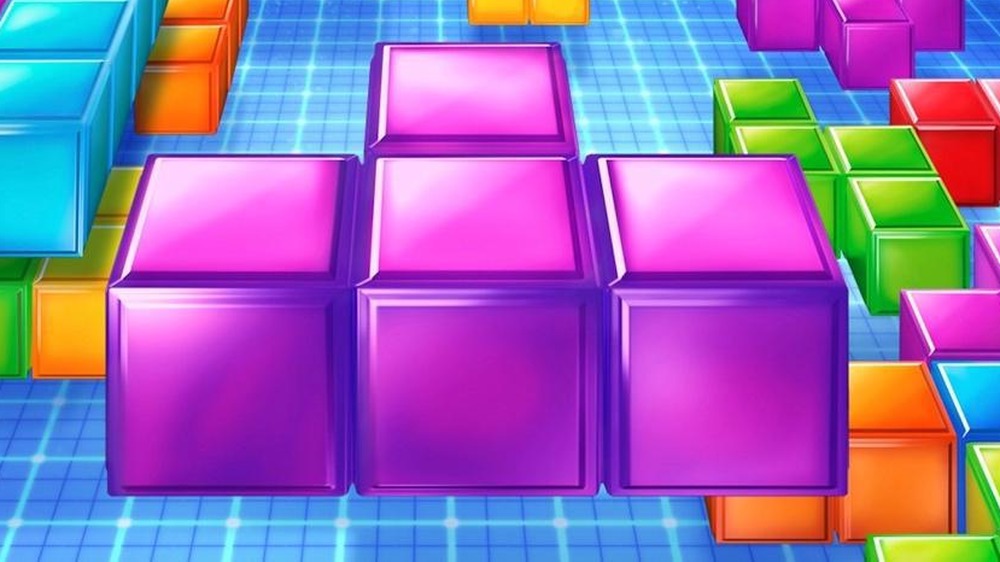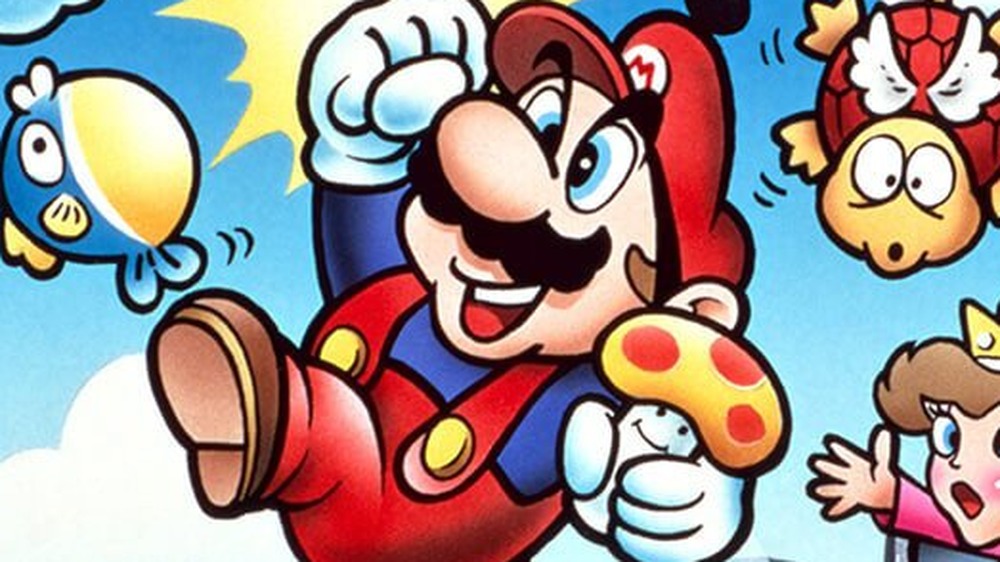The Untold Truth Of The Nintendo World Championship
The 1989 film The Wizard is remembered for a few things, such as Tobey McGuire's film debut, heavy Nintendo product placement, and Jackie Vinson's line, "I love the Power Glove. it's so bad." While that line, in particular, serves as an excellent example of how movies get videogames (and reality) wrong, the film helped inspire a real-life event – the 1990 Nintendo World Championship.
While the prizes awarded at the Nintendo World Championship couldn't match the $50,000 on the line in The Wizard, the competition captured gamers' attention across North America. Players from across the continent competed for the best time on a montage of levels from Rad Racer, Tetris, and Super Mario Bros. all on a now-legendary cartridge.
The Nintendo World Championship represents an important convergence of videogame history, early esports, and mainstream attention for what was still a young industry. Here is the untold truth of the Nintendo World Championship.
Complex scoring made for multiple paths to victory
In order to provide a level playing field for gamers, Nintendo curated a score based contest that played out over the three games. Players had six minutes to collect 50 coins in Super Mario Bros., complete the first course of Rad Racer, and finally rack up a high score in Tetris.
While contestants had to finish the challenges within the allotted time, it wasn't speed which determined a winner — it was the number of points. Players started with whatever had earned by the time they collected 50 coins in Super Mario Bros. Their score from Rad Racer was multiplied by ten and added to the Super Mario Brothers score, and finally, their score from Tetris was multiplied by 25 and totaled with the other scores to determine a winner.
The idea was that contestants would speed through the first two games to rack up points in Tetris. However, there were alternatives. Dying twice on the first level of Super Mario Bros. proved to be the fastest way to reach Tetris, and this is the method Thor Aackerland used to win. Later on, however, players found that the maximum scores were actually achieved by warping to world 3-2 in Super Mario Bros.
The Nintendo World Champion went to work for the competition
Once finalists made their way to the Nintendo World Championship finals, they were separated into three age groups. When all was said and done, Jeff Hansen won in the 11 and under category, Thor Aackerlund won in the 12 – 17 category and Robert Whiteman topped the 18 and above. Each winner received a golden Mario trophy and the official tournament ended there.
Just for fun, the Nintendo World Championship held one last match between the three champions. Thor Aackerland took the top spot in the showdown, making him the unofficial Nintendo World Champion. What did Aackerland do with his newfound fame? Went to work for the competition.
Aackerlund later took a job as an official spokesperson for Camerica, a company famous producing unlicensed Nintendo accessories, including the Game Genie. His focus in that company was marketing British Codemasters games in North America. Aackerlund retired from the industry a few years later, although he finally reemerged in 2010 to compete in the Tetris World Championship.
Original Nintendo World Championship cartridges are worth a fortune
To ensure that every competitor in the 1990 Nintendo World Championship had an even playing field, the company produced a custom cartridge that contained the same timed challenges. Players would compete for the best time while running through a montage of three popular NES games, Super Mario Brothers, Tetris, and Rad Racer.
Most of those cartridges today look relatively unassuming, featuring none of the pastel label graphics associated with early Nintendo cartridges. Instead, a black and white label shows the Nintendo World Championship's triangular logo underneath a serial number. These cartridges were produced only twice, once for the tournament itself and again as a prize for a Nintendo Power contest.
The rarity of these cartridges has turned them into the "holy grail" of collectible cartridges. The original cartridges, produced for the Nintendo World Championship itself, come in standard gray. In 2019, one of these cartridges was purchased by a vintage videogame store in Seattle for $13,000, although the store's owner estimated its final value to be between $15,000 and $20,000. The gold cartridges, produced for the Nintendo Power contest, have been auctioned off for over $100,000.




